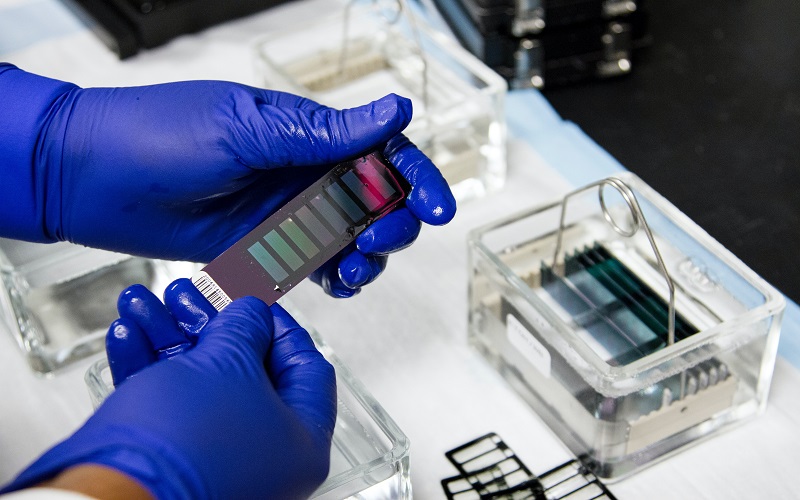Plants produce a vast array of metabolites that play a crucial role in regulating growth, development, and responses to environmental stress. Analyzing these metabolites can provide valuable insights into plant metabolism and potential applications in various fields. In this blog, we will explore the significance of widely-targeted metabolomics for plants and the different techniques used in this field.
What is Metabolomics?
Metabolomics is the systematic study of the complete set of metabolites present in biological systems. Metabolites are small organic molecules that are intermediates or end products of cellular metabolism. Metabolomics techniques allow the analysis of metabolite profiles and provide insights into metabolic pathways, biochemical interactions, and the function of cellular networks.
Widely-Targeted Metabolomics for Plants
Widely-targeted metabolomics is a comprehensive approach to identify and quantify a wide range of metabolites in a biological sample. Unlike targeted metabolomics, which focuses on specific metabolites, widely-targeted metabolomics utilizes non-selective separation techniques, such as liquid chromatography and gas chromatography-mass spectrometry, to analyze a broad spectrum of metabolites.
Widely-targeted metabolomics offers a holistic approach to characterize plant metabolism, enabling the identification of novel metabolic pathways, biomarkers, and potential applications in agriculture, pharmaceuticals, and biotechnology.
Widely-Targeted Metabolomics Techniques for Plants
Liquid Chromatography-Mass Spectrometry (LC-MS): LC-MS is a widely used technique for metabolomics analysis in plants. It involves the separation of metabolites by liquid chromatography followed by ionization and mass analysis in a mass spectrometer. LC-MS can detect a wide range of metabolites, including amino acids, nucleotides, lipids, and secondary metabolites.
Gas Chromatography-Mass Spectrometry (GC-MS): GC-MS is another powerful technique for metabolomics analysis, particularly for volatile and semi-volatile metabolites. It involves separation based on volatility followed by mass analysis in a mass spectrometer. GC-MS can detect a broad spectrum of metabolites, including organic acids, sugars, and fatty acids.
Nuclear Magnetic Resonance (NMR) Spectroscopy: NMR spectroscopy is a non-destructive technique that provides detailed information on the structure and quantity of metabolites. It involves measurement of the magnetic properties of metabolites, which reflect their chemical environment. NMR can detect a wide range of metabolites, including amino acids, sugars, and organic acids.
Direct Infusion Mass Spectrometry (DIMS): DIMS is a rapid, non-selective technique that involves the direct infusion of sample extracts into a mass spectrometer. This approach can detect a wide range of metabolites, including complex glycosides and lipids.
Applications of Widely-Targeted Metabolomics for Plants
Plant Metabolism: Widely-targeted metabolomics provides insights into the complexity of plant metabolism, facilitating the identification of regulatory pathways, metabolic switches, and novel metabolites.
Plant-Microorganism Interactions: Metabolomics analysis can elucidate the role of metabolites in plant-microorganism interactions, providing insights into plant defense mechanisms and symbiosis.
Crop Improvement: Metabolomics analysis can identify biomarkers related to plant growth, yield, and stress tolerance, facilitating the development of improved crops.
Drug Discovery: Plant metabolites have potential applications in pharmaceuticals and drug discovery. Widely-targeted metabolomics can identify novel bioactive compounds with pharmacological properties.
Challenges and Future Directions
Widely-targeted metabolomics for plants faces several challenges, including the complexity of metabolite extraction and analysis, chemical diversity, and the lack of standardized protocols. The future direction of this field involves the integration of multi-omics approaches, such as genomics, proteomics, and transcriptomics, for a more comprehensive understanding of plant metabolism.
In conclusion, widely-targeted metabolomics is a powerful tool for plant biology research, providing crucial insights into the complex metabolic pathways and networks that govern plant growth and development. The application of this technique has potential benefits in agriculture, biotechnology, and pharmaceuticals, making it an exciting area of research with promising prospects.
About the author
Collected by Lifeasible, a biotechnology company specialized in agricultural field. Lifeasible use LC-MS/MS technology to perform broadly targeted quantitative metabolomic detection and analysis of plant metabolites. The widely targeted metabolomics services provided by Lifeasible for plant metabolites combines non-targeted technology with targeted MRM technology, featuring as able to identifying multiple substances, accurate characterization and quantification, wide dynamic range, high sensitivity, and good reproducibility.










